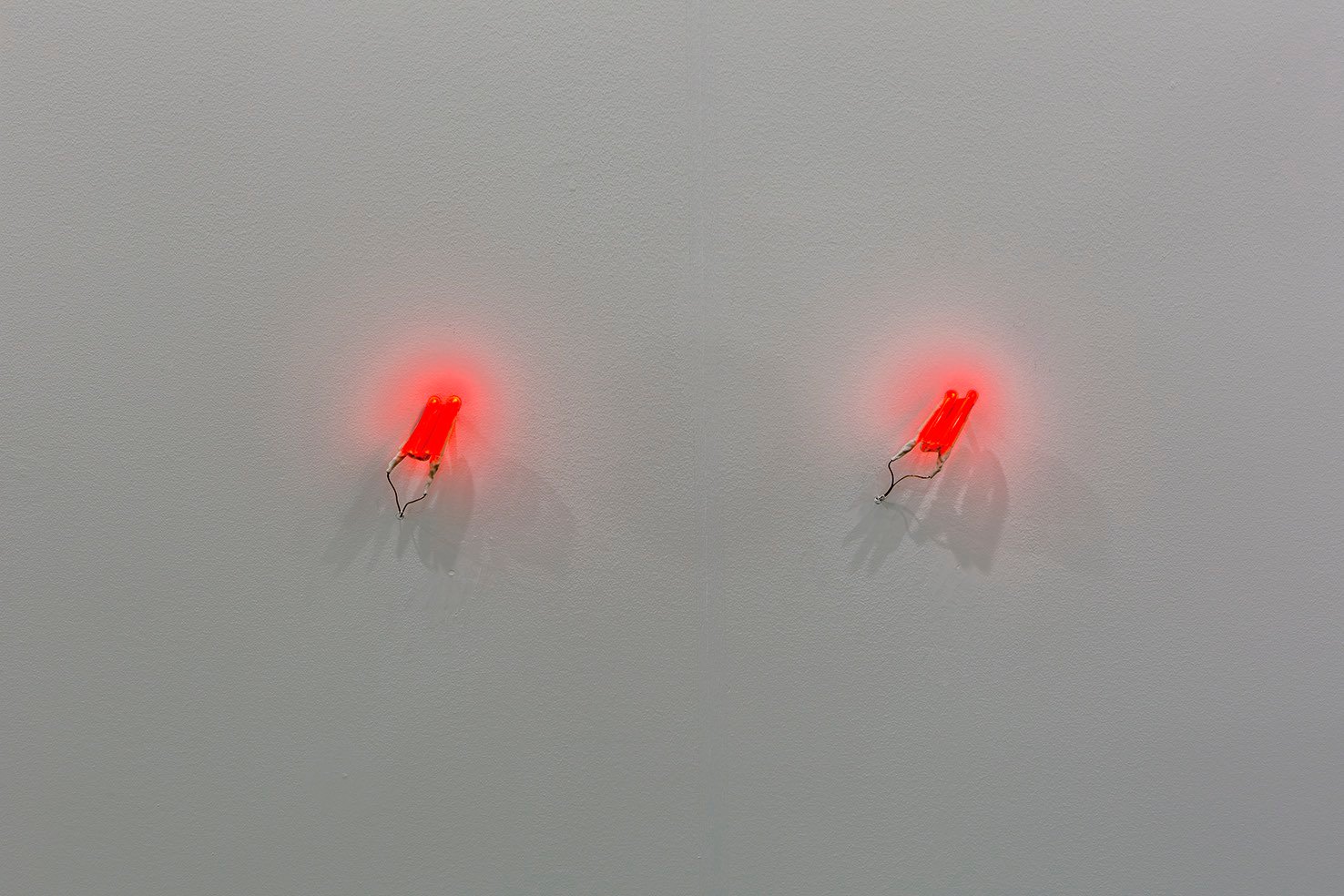5779. 7/12 – Liliana Moro
05.04.2019 – 04.05.2019
Liliana Moro
“ ” , 2018
neon
6 x 80 cm
“ “ ” is the title of a work of mine from 2001, presented at Emi Fontana in Milan, where the floor of the gallery was covered by broken glass on which the public had to walk. On the wall at the end I opened a hole through which you could see, in the next room, a baby bed made of crystal. “ ” is not untitled or without word, but rather an open space. I therefore took that title again and made it into a work” – Liliana Moro.
Continuing her sharp investigation of the mysterious nature of visual art – and its possibility to open alternative ways (upside down, inside out) to look at the reality around us – with this work Liliana Moro is taking us on a new adventure, which sees its seeds in the phantasmagoric power of language. Through this work the artist encapsulates a myriad of possible tales: from language to body language, from the title of an exhibition of artworks to the title of the exhibition as an artwork in itself, from Italian gesticulation to American slang, from Mario Merz’s Che fare? to Bruce Nauman’s D(EAT)H. With “ ” Moro is creating a magic door, leading us to disparate places; ironical at first sight, this work could be considered an unofficial manifesto of her entire practice, which is a continuous balance between rigor and playfulness, a unique position that has made Moro one of the most interesting voices of her generation.
Liliana Moro’s “ ” is the seventh chapter of 5779, the exhibition project opening the first season of BUILDINGBOX, which is an independent space within the premises of BUILDING, characterized by its own unique program.
Following these premises, a window gallery which is visible 24/7, and a calendar which consists of 13 months: 5779 is a leap year (Nisan, Iyar, Sivan, Tammuz, Av, Elul, Tishrei, Marcheshvan, Kislev, Tevet, Shevat, Adar Alef and Adar Beth), 5779 is a group exhibition in which several artworks are not presentednext to each other but rather one afterthe other. The structure of the calendar – day after day, month after month, year after year – becomes the guideline for the presentation of artworks by several artists; in doing so, this structure transforms the essence behind group exhibitions, from coexistence and juxtaposition to linearity and procession.
Furthermore, this specific format deconstructs the very core of the group exhibition format, which is, by definition, an exhibition in which several artworks, by several artists, are presented next to each other in a confined space and for a specific amount of time. With 5779 the idea of a group exhibition in which works of art by several artists appear, in the same space, one after the other – substituting one another, replacing one another – suggests an inversion in the equation at the base of exhibition making. Rather than rooting exhibition making into space, as it usually happens, this time the exhibition is rooted in time rather than space.
To reinforce the predominance of time over space, a complete overturning of exhibition making and of its premises, is the decision to display artworks that are not only on view 24/7 but also that are ‘fed’ by electricity – neon signs, works with light bulbs, videos, etc. –, works that are independent sources of light, “small suns” (although the Hebrew calendar is not purely solar but “lunisolar”) giving the rhythm of time.






